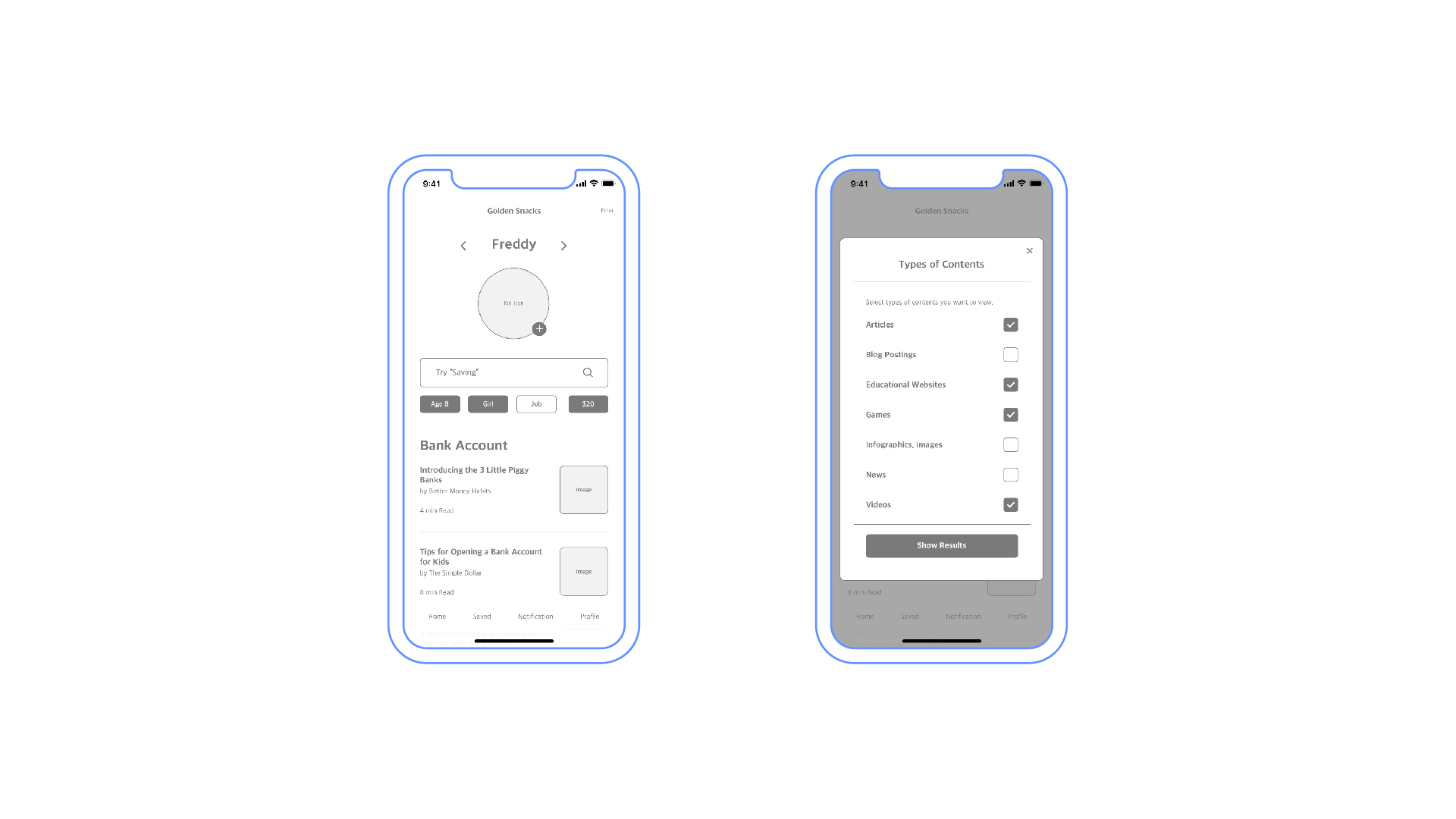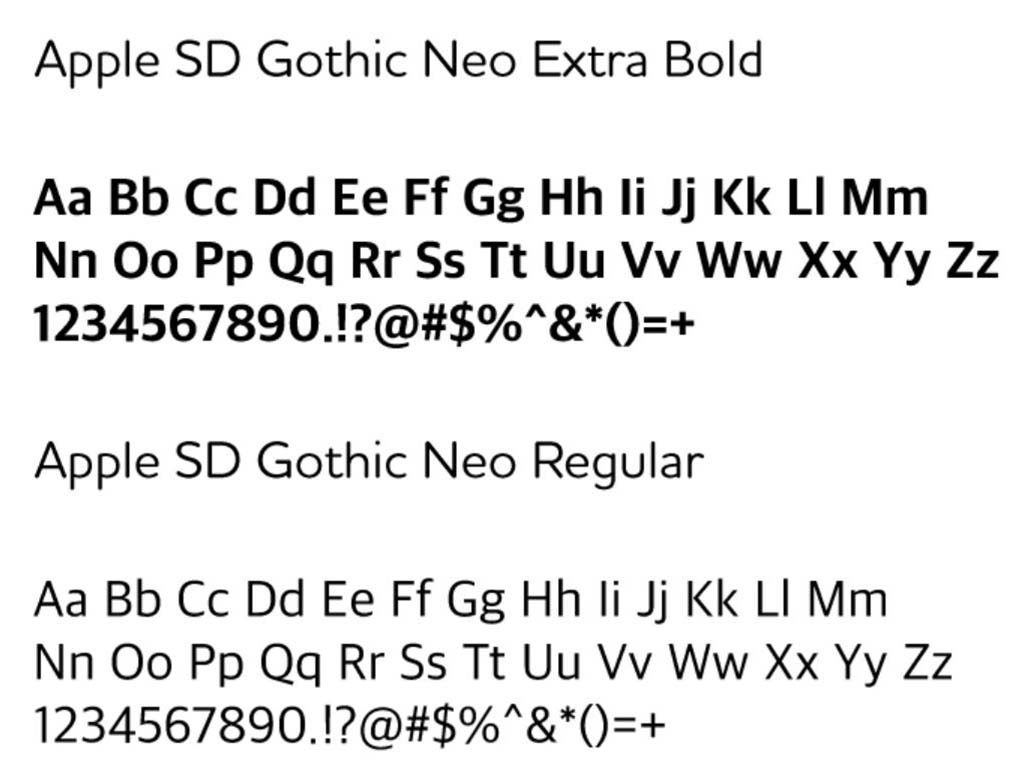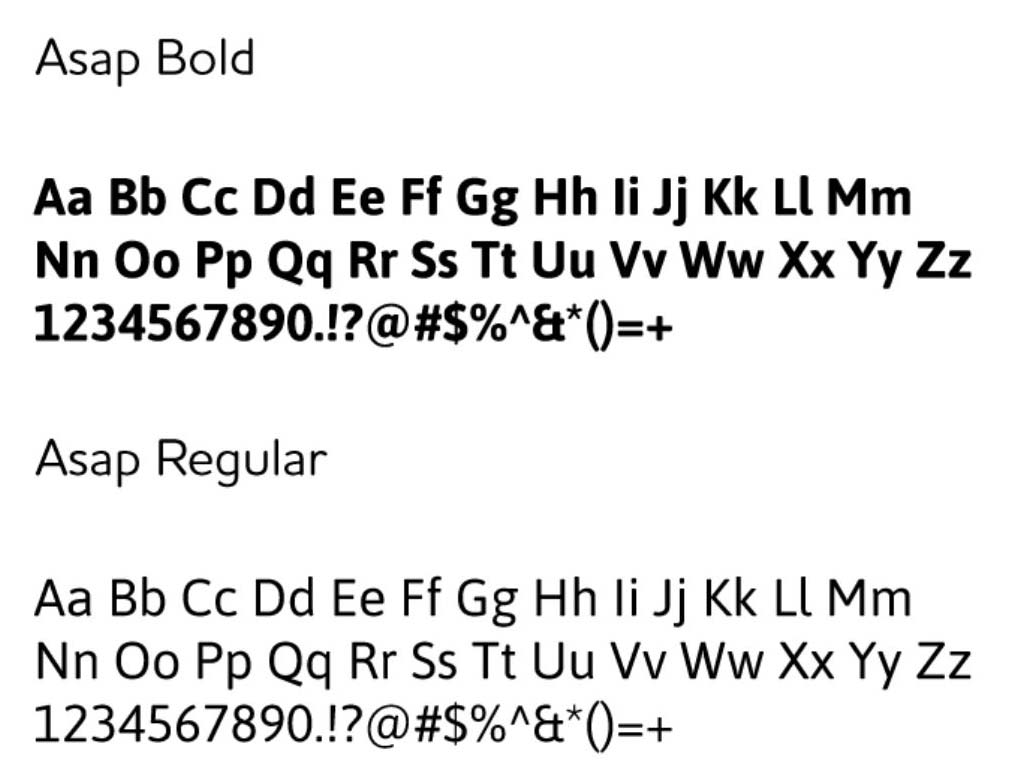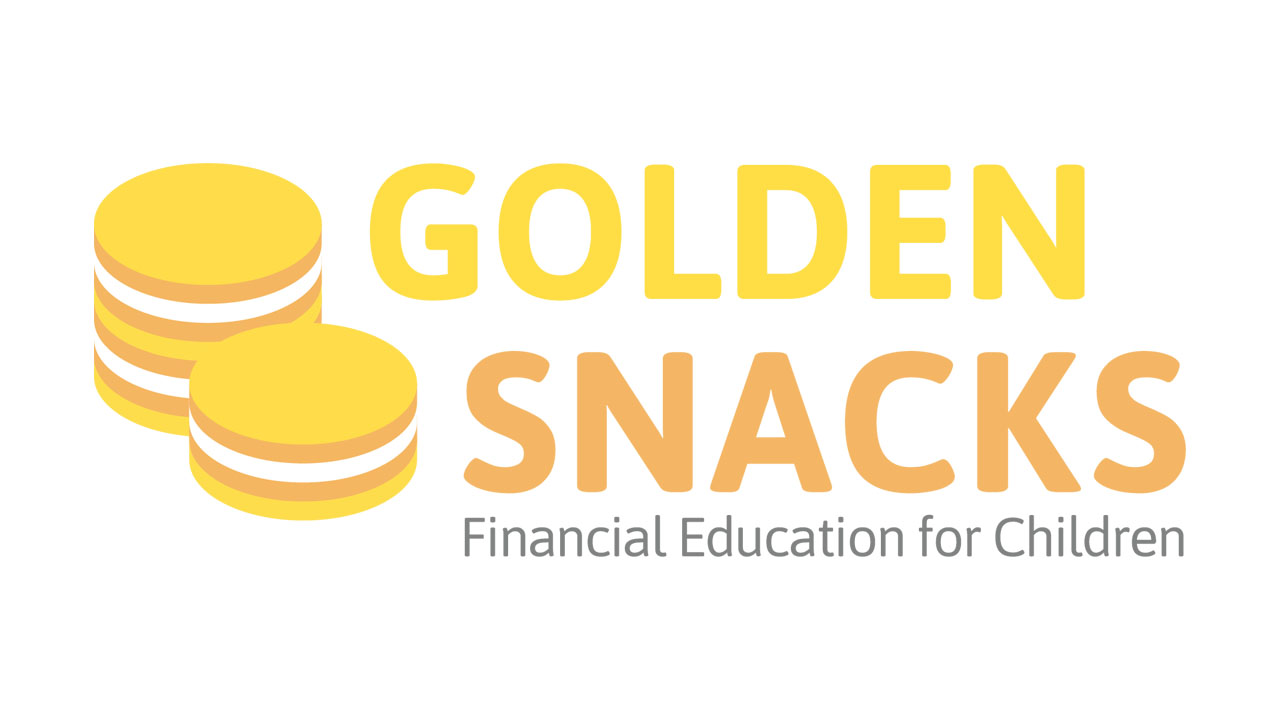OVERVIEW
Golden Snacks is a start-up focused on improving financial literacy from an early age by developing a mobile application that helps parents educate their children about money management and financial awareness. As part of the design team, I conducted user research to understand parent–child financial behaviors, interviewing target demographics and creating personas to synthesize insights. These findings guided the design and testing of intuitive interfaces, ultimately shaping an application that delivers timely, accurate financial resources tailored to families' needs.
Final Screen Mock-ups
The final Golden Snacks mockups were shaped through research, persona development, and usability testing. Clean layouts, approachable iconography, and intuitive flows were refined to create a friendly, engaging experience that helps parents teach children about finance.
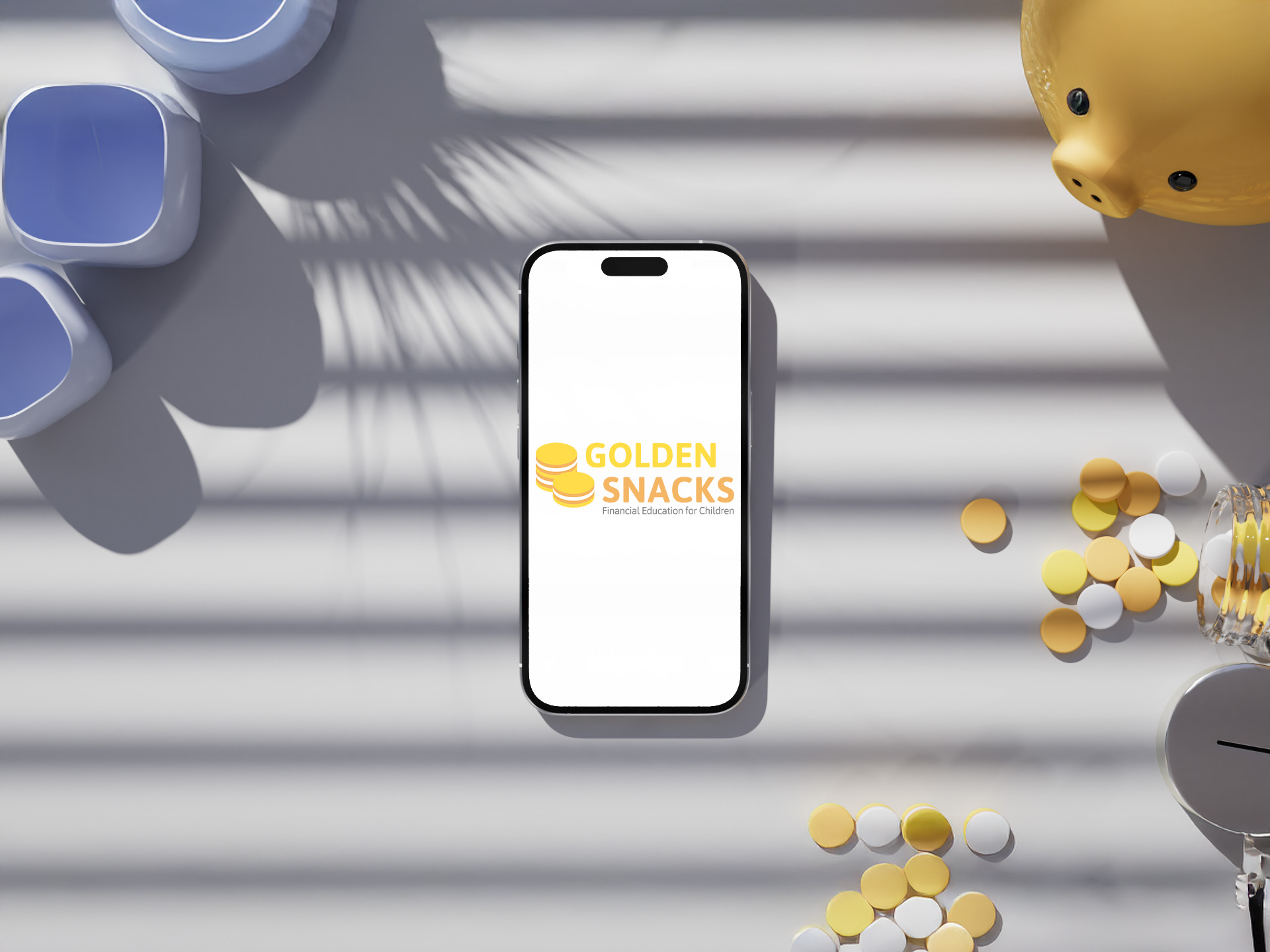
MY ROLE
Joining the team early on in 2020 when our team was just 3 developers. I designed directly under Staytions leadership. Assigned the task of taking a hardware prototype concept + rough sketch and visualizing its current capabilities and eventual possibilities in both functionality and hardware appearance. Through research and collaboration, I designed many different product demo videos and marketing materials. My content aided us in evolving our product from first-pass alpha concept to real world multi-fabricated V0.1 hardware.
Business Goals
Take care of an individual’s entire personal financial life, throughout their life and educate them along the way.
Make the most customer-centric personal finances service company that provides them, with the right tool at the right time and equalize access to financial stability.
Improve dialogue and relationship between parent, money, and child.
Product Goals
Create a financial services focused platform that grows in functionality from an individual's first account and educates them along the way.
Provide customers with personalized financial services that grows with them and educate as they grow through life.
Unvalidated Problems
Financial education is generalized and fragmented, however, parents still trust schools will teach their kids about personal finances and schools believe banks or parents will. Ironically, there are actually a lot of tools out there for families, but no standard for how to teach financial literacy and most parents do not know where to start and what is a trusted resource.
Target Audience
Our products target audience are parents of a children between the ages of 4 to 18 and are highly likely to have strong reasons to offer finance-related education to their kid, such as giving allowances, having a part time job, and preparing for college tuition.
Personas

Jennifer [child]
Female
12 years old
Has a brother
San Mateo, CA
Behaviors
Goes to school, and out with friends. Gets an allowance, uses it to buy “toys” Has a cell phone, texts a lot and is a heavy social media user.
Needs
To begin learning about financial best practices as early as possible, but doesn’t know it.

Tom [parent]
Male
42 years old
Has two kids
(Jennifer & Sean)
$90,000 household income
San Mateo, CA
Behaviors
Give kids allowance Tries to teach kids what he knows about budgeting, and personal finance Gives both of his kids cell phones. Isn’t worried about a Standard dinner bill - meets basic needs.
Needs
More wisdom some way to connect with parents of a similar life pattern, and some form of resource for his kids to be able to communicate with kids their age about personal finances.
Interview Questions
Q1.
When do kids / parents realize finance is a problem they need to address?
Q2.
How often are kids / parents talking about their finances and searching for content?
Q3.
Where do parents look for a guide on what to teach and why do they trust a certain resource?
Q4.
What keeps parents from teaching their kids about finance? What motivates them?
Q5.
What worries parents when it comes to financial education for their children?
Q6.
What do parents need to feel that their kids are financially prepared for their future?
The Interviews
View Interview LogsSynthesized User Data
View Real-time BoardClustered User Data
View Miro BoardThe Discoveries
Parental figures gage their importance of financial education from their own upbringing.
Parents have a difficult time figuring out what information is important to teach their child, at what age, and how to deliver the info.
Parents either don’t seek out personal finance information or don’t know where to look.
Parents actually talk to their children about finance quite often whenever it can be brought up through daily life experiences like shopping.
Our Validated Problems
Although most parents desire to educate their children about finance it is still a problematic task.
Parents have trouble finding and delivering the correct information based on given circumstances.
Empathy Map
What She Says/Feels
Very supportive and compassionate for others. "How do I make sure my children understand the importance of saving? My biggest priority are my children."
What She Hears
I rely on my partner for most of my financial knowledge, she reads a lot of article and blogs about saving.
What She Sees
I see my children strategically managing what they are buying and really showing that they know what their dollar value is.
What She Says/Does
Budgeting is important when raising a family me and my partner talk to our kids about what we can afford and what allowance we can give.
Product Direction
Features
An age based guide that sends notifications of financial insight to the user.
Organized content categorized by financial topics such as each topic such as saving, spending, and expenses.
Platforms
A mobile application which offers all different kinds of content about money/finances for children.
A simple, one-page website for online promoting of the app.
Initial Sketches
Concepts and Feedback
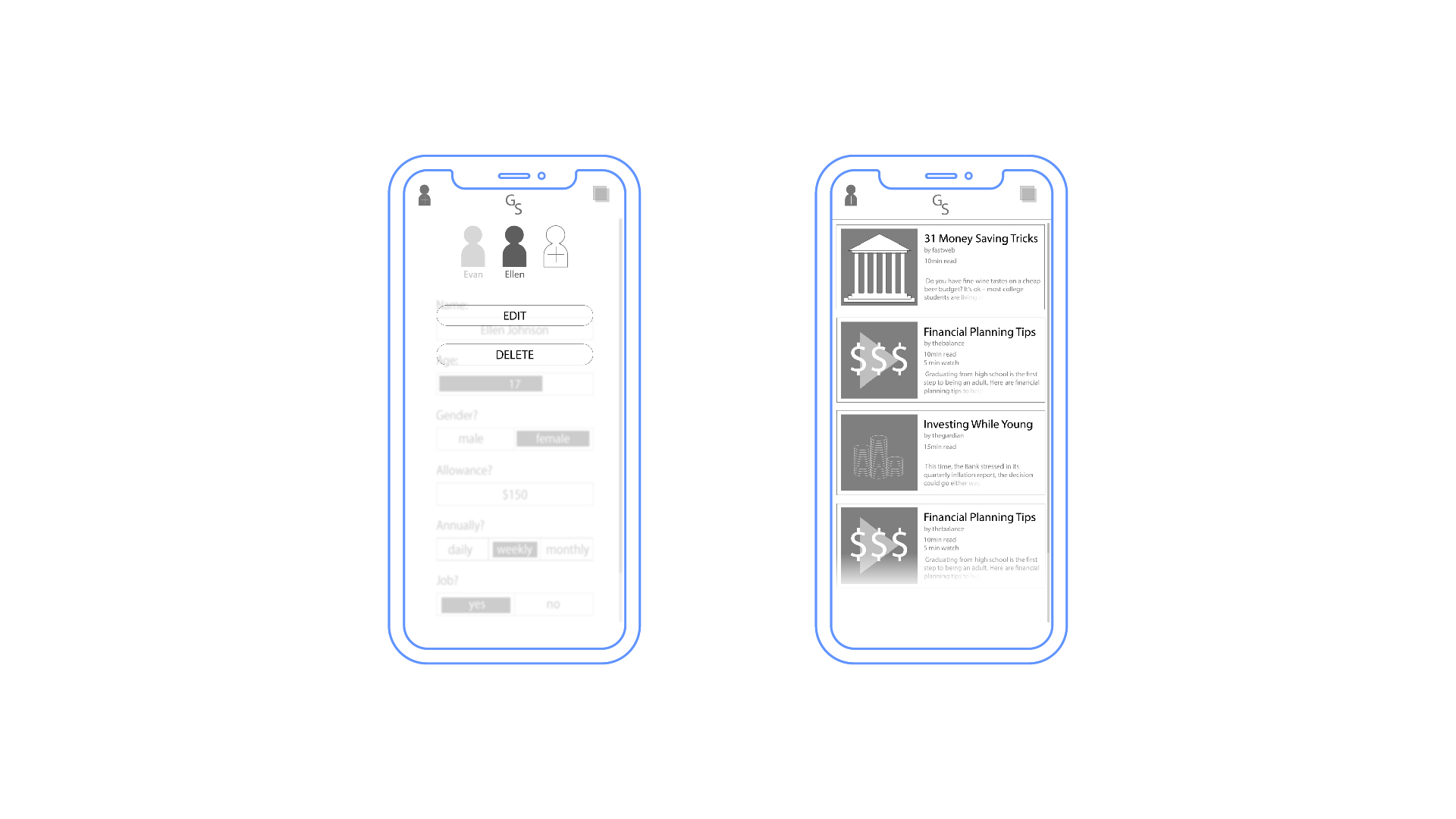
Concept 1
A UI based on versatility and large formatting to aid parents with easy understanding and comprehension.
A/B Testing Feedback
List layout was easily understood, read time indicator was a pleasant additive for testers, however users couldn't comprehend filter icon, and add child icons.
Concept 2
Inspired by AirBnb this format features an individual sorting system ranging from age to allowance, it also showcases a content specific filtering window.
A/B Testing Feedback
Filter button for some users was challenging to see. Kid icon text confused some users. Info-graphic was a confusing term and some users did not like the size of the article images. Thought the filtering system looked powerful, and that having the ability to sort was appealing.
Concept 3
Featuring an on boarding system to input children's information and allowing for anytime edits, and boasts a card article layout.
A/B Testing Feedback
Although featuring a lower navigation bar users tested out without noticing it. Users still found confused over kid icon text, however the filtering page was appealing to many, as well as the ease to find book mark location.
Usability Testing
Synthesis and Clustering User Insights
View Real-time BoardBranding
Color Palette
High-fidelity Design
Launch PrototypeView Full Case StudyBack to Top




